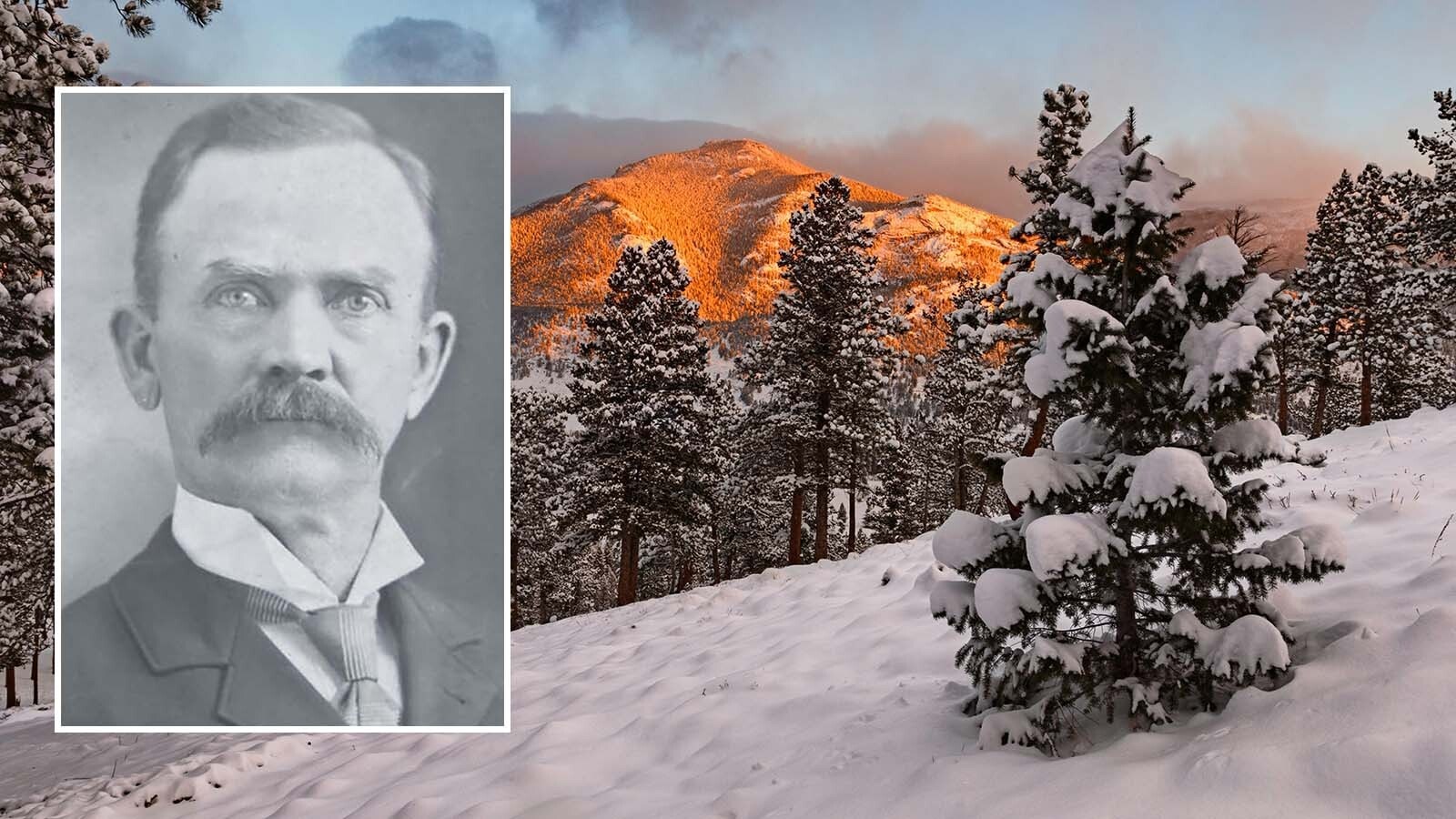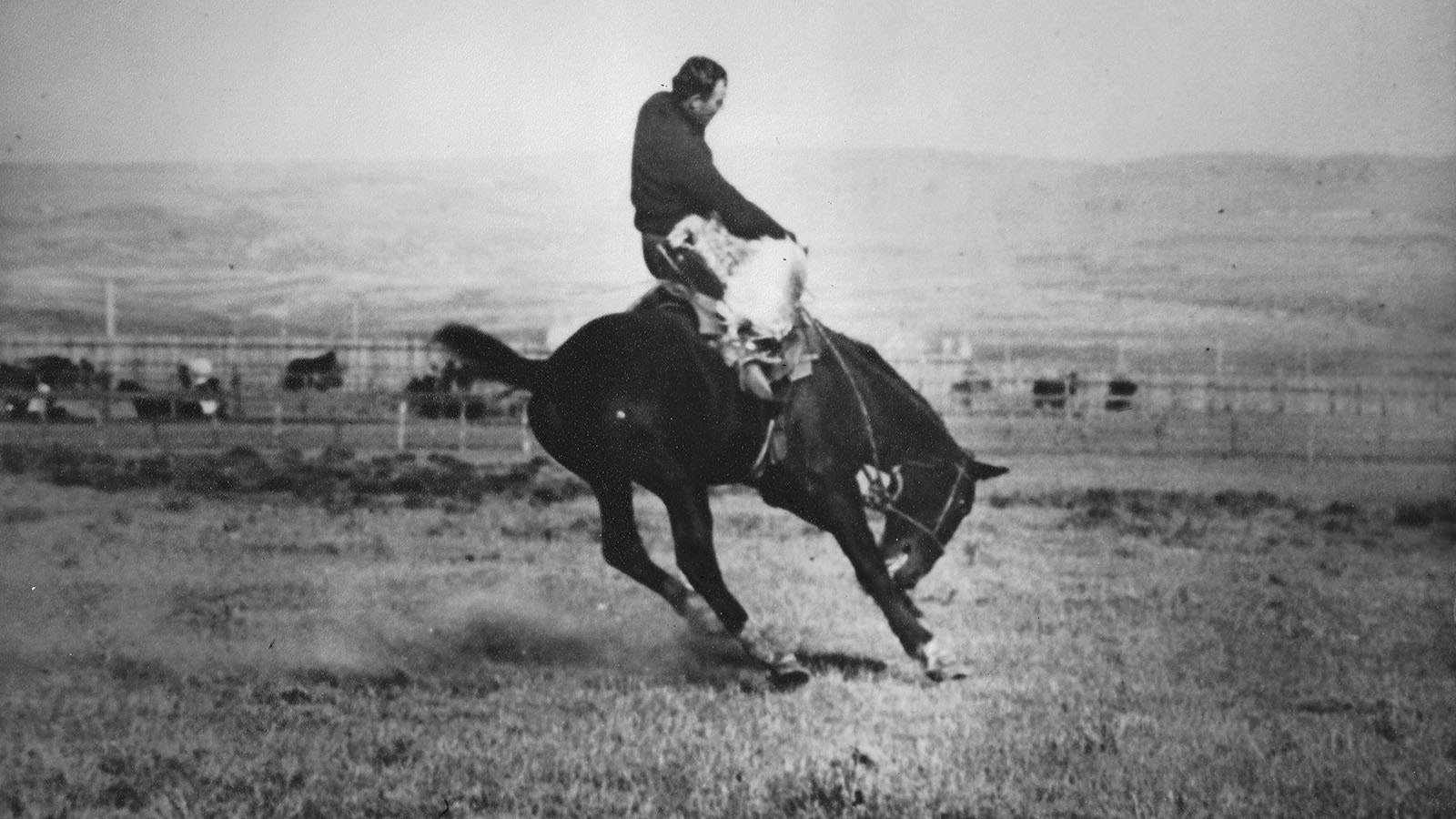“I worship the Sun and Big Horn Mountains… their offspring lands and streams provided me with an abundance of good food and rich raiment. I was born an Ohio American, I shall die a Crow Indian American.” – Horse Rider
Born in Ohio in 1850, Tom Leforge spent most of his life living among the Crow Indians. He and his family traveled to Montana on the Bridger Trail in 1867. During the warfare with Indians of that period he joined the Montana Militia.
That service was more than an education as he saw the worst of military life, survived the assault of raiding Piegan Blackfoot Indians, and spent a winter with Jim Bridger learning mountaineering skills.
Becoming Crow
In 1868 Tom joined a group of Crow Indians then camping in Livingston Canyon. The camp leader, Yellow Leggings has a son named Three Irons. He was the same age as Tom. The two youths became fast friends.
Tom was a fast sprinter and the people nicknamed him Fast Runner. Later he earned another name, one that would be Tom’s for most of the remainder of his life. When he successfully rode a horse that threw all its other riders Tom’s Crow name became Horse Rider.
Yellow Leggings adopted Horse Rider. Three Irons was now his brother. Horse Rider began his intense education about being a Crow Indian. At times he walked in both worlds fulfilling the duties of a Crow Indian at times and then working as a blacksmith or laborer in the white world.
Horse Rider spent much of his time in 1868 staying with both his Indian and white families as well as supplying meat to Fort Ellis. When an expedition left that fort to seek out warring Indians, Horse Rider went along as a camp follower and observed a skirmish. Mitch Bouyer served a guide for that expedition. He and Horse Rider maintained a friendship until Mitch was killed at the Battle of the Greasy Grass (Little Bighorn) in 1876.
A Close Call
While on a mission to escort emigrant trains the summer of 1868, Horse Rider and Mitch Bouyer had a “thrilling experience.” The two were miles ahead of the cavalry detachment Mitch was guiding.
Seeing a wagon train, Mitch and Horse Rider galloped toward the emigrants, who, mistaking them for outlaws prepared for a fight. Instead of a greeting of warm wishes they narrowly miss one of hot lead from around a dozen cocked rifles.
The two “outlaws” were told to dismount and drop their weapons. The hurried explanations of the two guides fell upon deaf ears. They were tied to wagon wheels while the emigrants pondered their fates. When untied it was all too clear that the hard hand of frontier injustice was about to end their lives. They were handed a shovel and spade and commanded to dig their own graves.
They set to the task under an armed guard. Any attempt to escape was instant death. Mitch and Horse Rider played for time by digging as slowly as possible in hopes that the army would soon arrive. An elderly woman stood nearby reading Bible passages. That woman promised them a decent funeral.
In the nick of time the cavalry arrived and set the situation right. Even so, one of the men wanted to shoot them anyway before they could help Indians attack the train.
This would be the first of many thrilling experiences in Horse Rider’s life. In the 1860s-1880s the Crows were almost constantly being raided or attacked by the Sioux, Blackfeet, Cheyenne, Arapaho, and others. There were long periods with weekly episodes of violence for the Crows. Add to this Horse Rider served the U.S. military on several campaigns.
Noteworthy was the Sioux War of 1876 where he was among the Crow scouts. He had a mishap and broke his collar bone before Mitch Bouyer and the Crow scouts were assigned to guide and scout for George Armstrong Custer and the 7th Cavalry on their journey to the Little Bighorn River.
Mitch did not survive the Custer Fight. Had he not been injured, Horse Rider likely would have stayed with his friend and shared his fate. Instead, he was being thumped around in the back of a military ambulance to a rendezvous with the steamer Far West.
Courting And Marriage
Horse Rider’s attention was caught by a tall, brown-haired mixed-race Crow woman named Cherry. She was a beauty with hazel eyes. Horse Rider began an indirect campaign of courting Cherry. He became a friend of her brother, Head-and-Tail Robe. This relationship gave him access to the family’s tipi. He visited often but never spoke to Cherry directly.
Horse Rider believed he established a telepathic link with his heartthrob and was convinced she liked him above all others. Cherry’s mother figured the situation out and one day castigated a very surprised Horse Rider about his shabby appearance, offering to have Cherry make him a suitable coat and moccasins.
Cherry protested claiming that Horse Rider would never marry an Indian woman. Up until this situation Horse Rider was uncertain of marrying outside his race. He decided to follow his heart and to turn his path completely to the Indian world.
Horse Rider then began the gift giving ritual expected of suitors. Over the course of several days, he opened the flap on Cherry’s tipi and left offerings of beads, blankets, cloth, sugar, canned goods, and bacon. Upon placing the goods in the tipi, he said nothing and left.
It took a push from Mitch Bouyer’s wife, Mary, to close the deal with Cherry. Mary told Cherry that Horse Rider adored her. As a result, Cherry approached Horse Rider’s blacksmith shop. She stood silently nearby silently smiling at him. After a while she spread out a blanket and sat waiting. Horse Rider took the cue and joined her. He stammered his way through his first nervous conversation with Cherry as a potential suitor. After finding she lacked metal awls for making clothes he went back into his shop and made two. With these gifts in hand, she departed.
Later that day Cherry and her sister went into Mitch Bouyer’s house. Mary eventually called out to Horse Rider that someone wanted to talk to him. Cherry and her sister had prepared a large room for his arrival. The chamber had been carefully arranged with a combination of possessions from Cherry’s and Horse Riders tipis.
Horse Rider’s bed was laid out among the possessions. With this simple demonstration of intent, the couple were considered married. Horse Rider was twenty and Cherry was eighteen.
According to Crow customs, Cherry’s mother moved in with the happy couple. Crow culture required that Horse Rider was neither to take notice or speak to his mother-in-law. She slept at the lodge entrance with a club within easy reach. She was the gatekeeper of the lodge and kept the peace there.
The club kept village dogs at bay, but it also could be used on troublesome visitors if necessary. The mother-in-law was expected to chop the wood and tend the fires. She did most of the menial work around the house, like tanning hides.
Cherry began producing fine clothing for Horse Rider. She took great pride in how he became one of the best dressed warriors at church. She was a model wife.
Cherry also showed herself to be cool in combat situations, once running outside of cover to retrieve the weapons of a dead Sioux raider. Together the couple had several children, and the marriage lasted until Cherry’s untimely death from disease.
Horse Rider had many other wives, including a cousin of Cherry. When Mitch Bouyer died, he married Mitch’s widow, Mary, and adopted his children. Horse Rider was proud of all his children and thought them beautiful.
Horse Rider was an accomplished translator and helped negotiate a treaty with the Shoshone. His service to the U.S. Army was noteworthy. He was an important man among the Crow. Somehow this wasn’t enough to satisfy, and he became more concerned about making money.
The Return of Tom
Tom Leforge left the Crow life for several years. He departed the Crow homeland, Absaroka, to go to Colorado. There, despite having a wife in Indian country, he married Mary Clay, a white woman. They moved into a mining camp. The Poor Man Mine operated by Tom failed, prompting a move to Livingston, Montana, to a ranch in the Rocky Mountains. There he was visited by his former Crow wife, Magpie, while he recovered from typhoid fever.
He lived in Livingston for several years and then joined the circus, working with Liver-Eating Johnston and several Crows he was both Tom and Horse Rider for a brief spell. When pay was not forthcoming, he wound up on the Umatilla reservation in Washington State. He thought about marrying an Umatilla girl, but her husband objected. Rather than getting shot by a jealous husband, Horse Rider left Umatilla. As Tom he next prospected in the Cascade Mountains. When this failed, he operated two brickyards.
Tom divorced Mary Clay and while on a train trip he spotted Lola Lewis a white woman from Umatilla. They were soon married, and she moved to Seattle while Tom tried his luck prospecting in the frozen north. He did two trips to Alaska. Failing again at prospecting he took up brick work again. Lola stayed in the Seattle area while he was in Alaska. He sold out the brick business and joined Lola. They had two daughters together.
Horse Rider Goes Home
Something still gnawed at Tom. The simple life of the Crow called for Horse Rider to surface again. Tom abandoned his Seattle family and returned to Absaroka as Horse Rider.
They say, “you can never go home.” At first this maxim was true. There were so many changes in those years of wandering. People didn’t know Horse Rider. Some remembered him but heard he was long dead.
Magpie, who was now with her fourth husband, recognized Horse Rider. She had no intention of leaving her current husband. Even so Magpie was a remarkable woman and she brought the children of Horse Rider to see him again. The children were far more accepting of their long-lost father returning from the dead than Horse Rider had reason to hope. He was home.
Horse Rider was content to spend his latter days back among his Crow friends and relatives. He had been a witness to much of the history of the West. He knew or was known by many of the stars of the history of the West. He is buried in the Custer National Cemetery in Montana on Crow land.
His memoir, Memoir of a White Crow Indian, was dictated when Horse Rider was in his seventies. His memory was sometimes hazy. Despite this, it is well worth reading.
Terry A. Del Bene can be reached at terrydelbene@me.com





